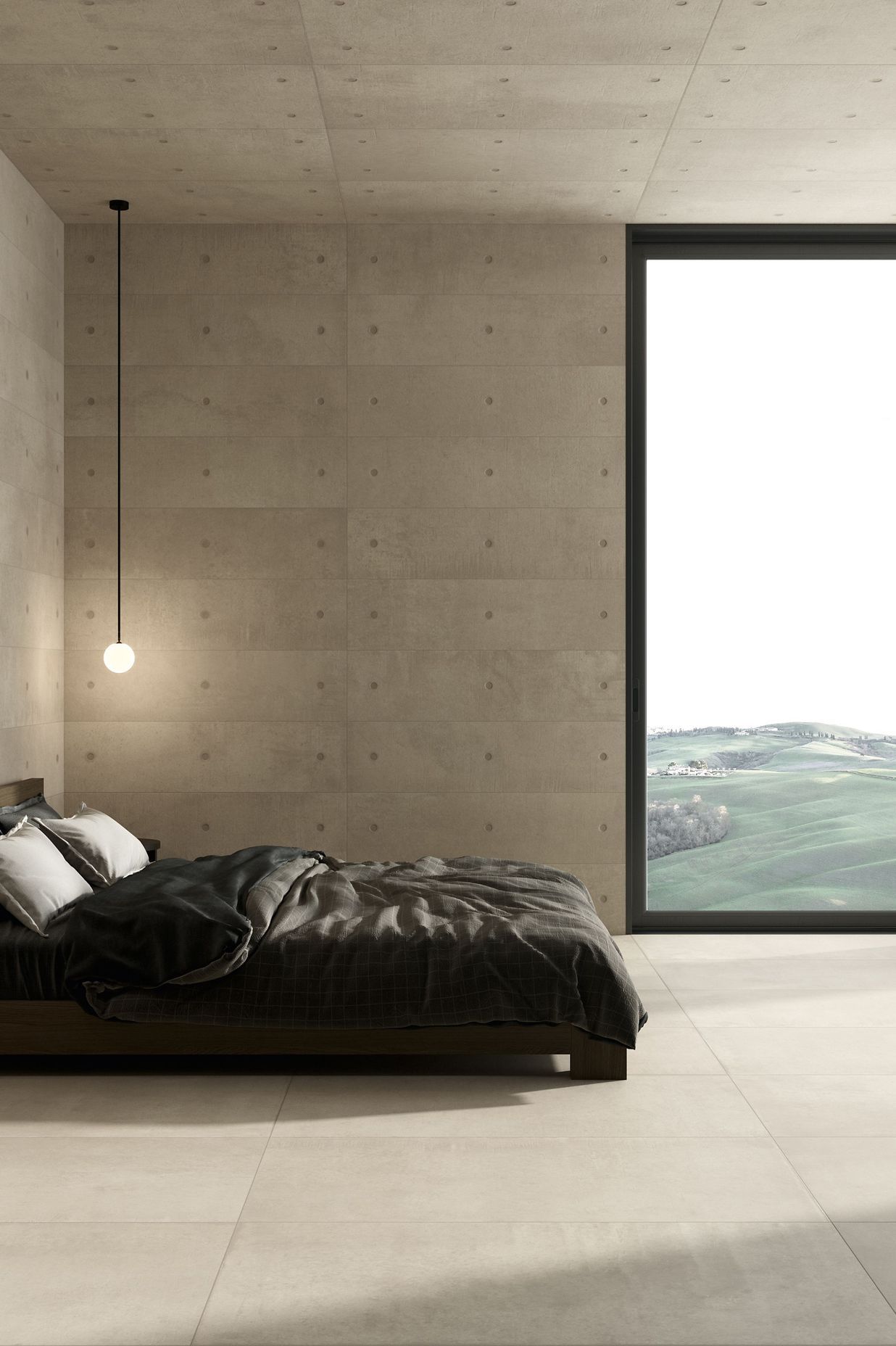Concrete has been described by Italian architect Andrea Maffei as the material that best defines modern architecture, and, he says, with its unpredictable variation in shade and texture, it is akin ‘to the irrationality of man’. He’s designed a brutalist range of porcelain tiles that so closely mimic concrete they have seen uptake the world over.
Italian architect Andrea Maffei attributes a distinct sense of personality to concrete; its appearance, he says, is akin to the irrationality of man. For Andrea, concrete is a material that also defines modern architecture and it is one he has again brought to the world stage with his latest designs - in porcelain. Available exclusively in New Zealand from The Tile People, his range known as DOT is a collection of porcelain wall and floor tiles suitable for both interior and exterior applications that captures the intricacies of natural concrete in an alluring and authentic way.
Three shades of grey
Concrete, specifically reinforced concrete, has changed the way we build and the manner we experience architecture, cities and the built environment. “Reinforced concrete has created a new textural sensation; cold, grey, seemingly neutral but at the same time uneven, spotted, alive and vibrant. “The way it is cast and vibrated inside the formworks means it always turns out slightly differently - sometimes darker, sometimes lighter, with small holes, all uniform,” Andrea says.
“This irrational and unpredictable variety of tones and surfaces brings [concrete] closer to the irrationality of man, who finds many different perceptions in its matter. By looking intensely at concrete you can read many different stories, parallel to each other, overlapping and rich in complexity.”
The DOT collection is offered in three shades of grey: griege, grigio chiaro and grigio scuro, with four decors creating a vast range. “Comprising etched circles, rough in outline just like the textured surface, the irregularity creates areas of light and shadow on the already varied greys of each surface culminating in tiles with a distinct sense of character and unpredictability of surface,” The Tile People’s Lindy Messam says.
For Andrea, light remains the hallmark feature of concrete - and this collection. “When it touches upon concrete, the space takes on different appearances; the perception of the environment is never the same. Spaces covered with DOT create a completely new sensation of light in the setting."
The wall tiles are available in four forms - two rectangular shapes, one square and a triangular form - each articulated with the distinctive dots.
“Seamless integration with floor tiles is another feature of DOT, with the corresponding floor tiles exactly the same as those for the wall, aside from the dot - a feature only evident in the wall collections,” Lindy says.
A matrix of geometrical forms
By incorporating the dot on each wall tile, these concrete-effect tiles offer a subtlety of form yet a rich geometric pattern on each surface they are used. “DOT makes a common material such as concrete accessible to everyone - whether it’s for the kitchen, bathroom or an outdoor area. This collection brings a favoured but often inaccessible material to everyone for use in residential spaces in a particularly distinctive way,” Lindy says.
Maintenance free: the beauty of concrete-look porcelain
A key driver for the use of porcelain to mimic materials such as concrete and natural stone is porosity. “The ability to accurately and authentically recreate these natural materials in porcelain has never been an option in the indistinguishable manner it is now,” Lindy says.
“The way porcelain is produced and fired at very high temperatures renders it non-porous, unlike materials such as stone and concrete. This is a real drawcard as it means it requires little to no maintenance over time.
“Combining that with the inability to distinguish between, for example, concrete and the surface created in the DOT collection, has led to the immense popularity of this style of porcelain.”
Find out more about concrete-look porcelain and the DOT collection.



